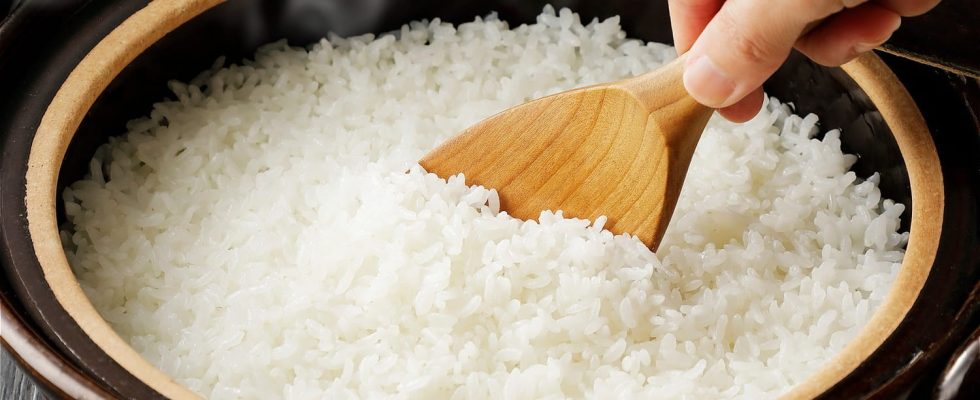Although most people cook their rice in plain water, you might consider using vinegar instead, as it may give you better results in the end.
Rice comes in 40,000 varieties, including long-grain white rice, short-grain white rice, brown rice, wild rice, jasmine, black rice, and glutinous rice used for sushi. The proper cooking method is a matter of preference and tradition, as is how much water or salt to use when cooking with water, steam, or using a rice cooker. Some home cooks insist that all varieties of rice be rinsed before cooking to remove extra starch for fluffier rice, while others argue that only long-grain white rice should be rinsed.
Each culture has a preferred variety and cooking method for rice. Americans prefer Caroline Gold long grain white or brown rice for popular dishes like “dirty Cajun rice”. Indian and Pakistani cuisine favors aromatic basmati rice, and Spanish cuisine favors the medium-grain Bomba or Valencia rice (named after the Spanish region where it is grown) used in paella. Italian cuisine appreciates the short-grain arborio rice used in risotto.
Replacing the water with different liquids, like coconut milk or chicken broth, changes the flavor, adding another dimension to the grit. Other types of liquids can be used to change the texture without affecting the flavor. Although tap water will do, for light fluffy rice you should consider adding vinegar to the pot.
Indeed, if your rice is never as fluffy as you would like, adding white vinegar to long grain rice is the trick for you. The acid acts as a rinsing agent, removing extra starch from the outside of the grain and preventing the rice from congealing in the pan.
If you are worried about the taste, rest assured that the amount of vinegar added will not be noticeable. For each cup of rice, add one teaspoon of white vinegar and two cups of liquid to a medium saucepan. Unless otherwise specified, the traditional ratio of water to rice is two parts water to one part rice, although rice cookers often require less liquid. Cover the white rice and lower the heat when the water boils. Once the water has been absorbed, fluff the kernels, removing any lumps with a fork, and adjust the seasoning with kosher salt, fresh herbs, or another liquid such as citrus juice or soy sauce to taste. Although less popular, rice can also be prepared like pasta. Boil the rice in plenty of water and drain when cooked to your liking.
That’s not the only benefit of using vinegar!
Vinegar has many health benefits
Besides preventing cooked rice from sticking between grains or to the pan, adding vinegar to rice has many health benefits. According to a study by Self Decode, meals containing vinegar, especially those with a high glycemic index like rice, cause fewer blood sugar spikes after consumption. Vinegar works to block or dampen the abilities of enzymes that break down carbohydrates [et freinent] the rapid absorption of carbohydrates in the form of glucose. It also improves insulin sensitivity, which could make it an effective choice for slowing the onset of diabetes.
Additionally, vinegar can be used to kill harmful bacteria before eating foods of questionable origin. Although the evidence supporting these claims is inconclusive, it is possible that the low calorie intake of vinegar helps with weight loss and improved heart health.
Instead of assuming that all vinegar bottles are the same, it is recommended to check the nutritional information. Sometimes sugar can sneak into vinegar depending on what it is mixed with. Vinegar itself is not without risks either. When adding it to the rice, be careful not to add too much. If you do, it can cause problems with your esophagus, cause acid reflux, and upset your stomach.
Other ways to improve your rice
If you don’t have vinegar on hand, there are other ways to spice up your rice. If you want to make it fluffier, use a fork or other utensil to fluff it up before serving. This will also separate the rice lumps. To prevent it from becoming mushy until ready to serve, simply place a towel over the rice to absorb any condensation that escapes from the hot pan.
There are also other ways to prevent rice from sticking. A strainer is an essential tool to avoid lumps. By running water through a fine strainer filled with rice, much of the starch will be removed. Besides vinegar, talc can be added to the rice to keep it separate.
Sometimes the condition of your rice when cooked is due to simple human error. One mistake everyone makes when cooking rice? Do not rinse it out, or use cold water when doing so. There’s also a chance you’ll turn up the heat too much while anxiously waiting for dinner to be ready. This can result in different interior and exterior textures and possibly even burns. Although it also requires some patience, letting the rice rest cannot be avoided, no matter how much you feel like serving it. The rice should sit for about 10 minutes undisturbed before it is ready to serve.
So go ahead and try this trendy trick to cook your rice with vinegar. You might discover a new secret to getting fluffy, delicious rice, while enjoying the health benefits of vinegar.
